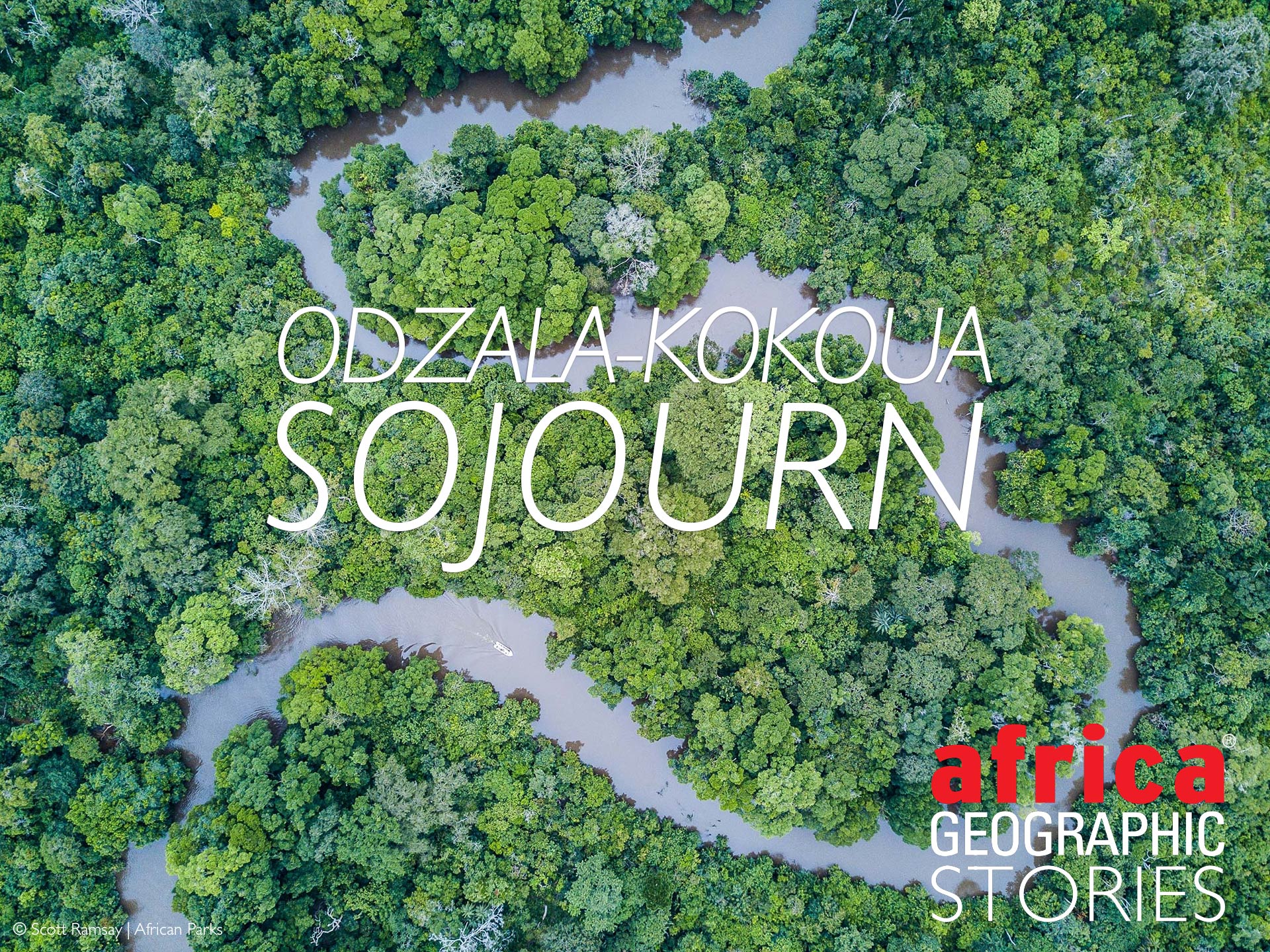
Finding paradise in Congo-Brazzaville


Early mornings at Odzala-Kokoua National Park’s Imbalanga Baï were usually misty, and we sipped Ethiopian coffee and snacked on delicious French toast and pineapple slices as the clearing slowly revealed itself. Exquisite red-fronted duikers grazed quietly beneath us, and curious Guereza colobus peered into our elevated lookout from overhanging canopies while African grey parrots wolf-whistled overhead. And then Hartlaub’s ducks (a lifer for me) winged in to work the baï, and dashing white-crested hornbills ghosted through the canopy. I had found paradise!
I had heard stories of the arduous journey heading north from Brazzaville to the dense equatorial rainforest of Odzala-Kokoua National Park – about a muddy, potholed, 800km road trip lasting a few days. But, I was told the journey is worth every hour because the wildlife experience once you get there is off the charts.
And so I was a tad wary and contemplative about the journey ahead as I munched an early breakfast of eggs, bacon, fresh fruit, and a gigantic croissant washed down with strong aromatic coffee. My view from the elevated Brazzaville Radisson Blu terrace was impressive – over the wide Congo River towards Kinshasa on the opposite bank. Kinshasa is, of course, the capital of the neighbouring Democratic Republic of Congo (DRC) – not to be confused with Congo-Brazzaville, my choice for this safari.
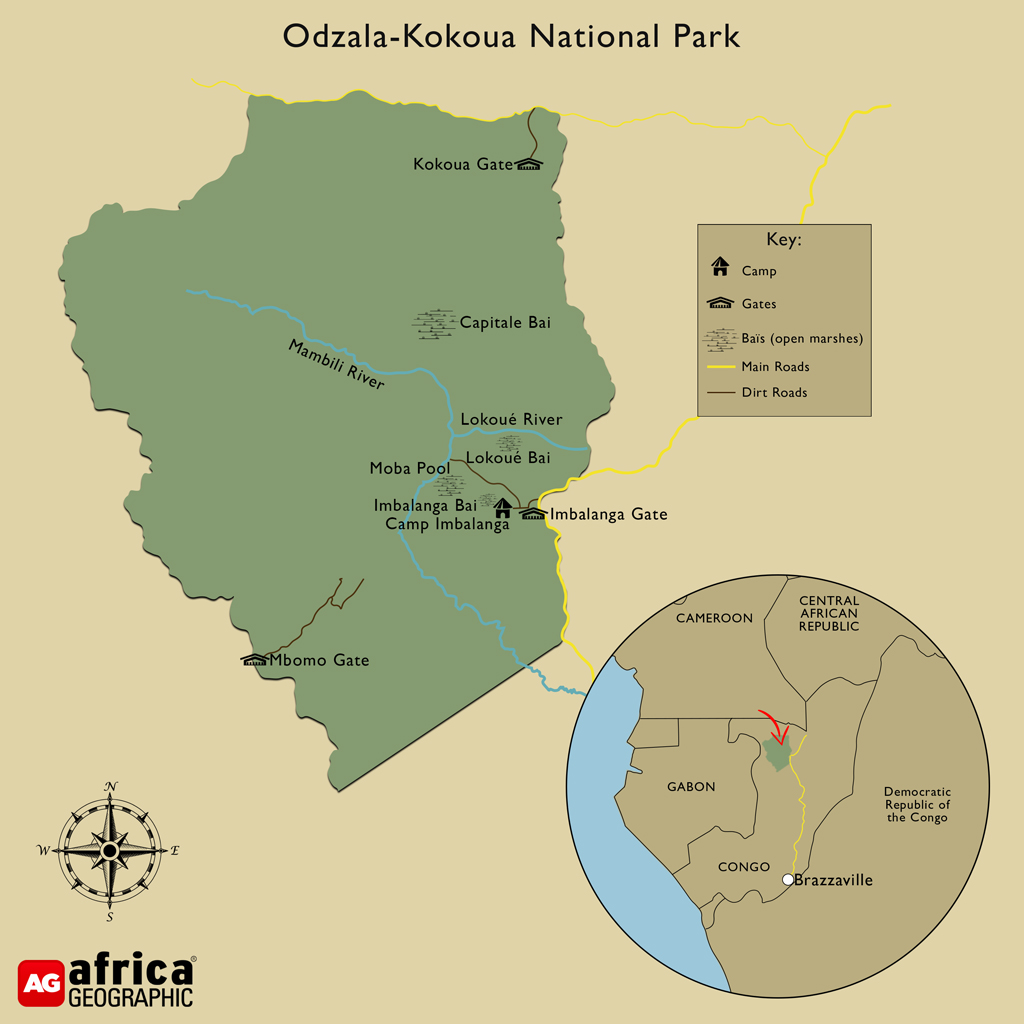
And so my Africa Geographic colleague Brendan and I headed out for the arduous road trip, courtesy of an African Parks driver. Imagine our surprise when, after navigating the backstreets of downtown Brazza, we emerged onto a wide tar road and proceeded north at a decent clip. The trip lasted nine hours, broken only by a stop in an impressive town called Oyo, where we loaded up on another nostril-quivering coffee and delicious pain au chocolat at a restaurant named Les Jardins d’El. We stopped a few times to watch forest elephants (a lifer for us) feeding on the roadside. The excellent tar road is a few years old, so the proffered advice I had received was somewhat outdated.
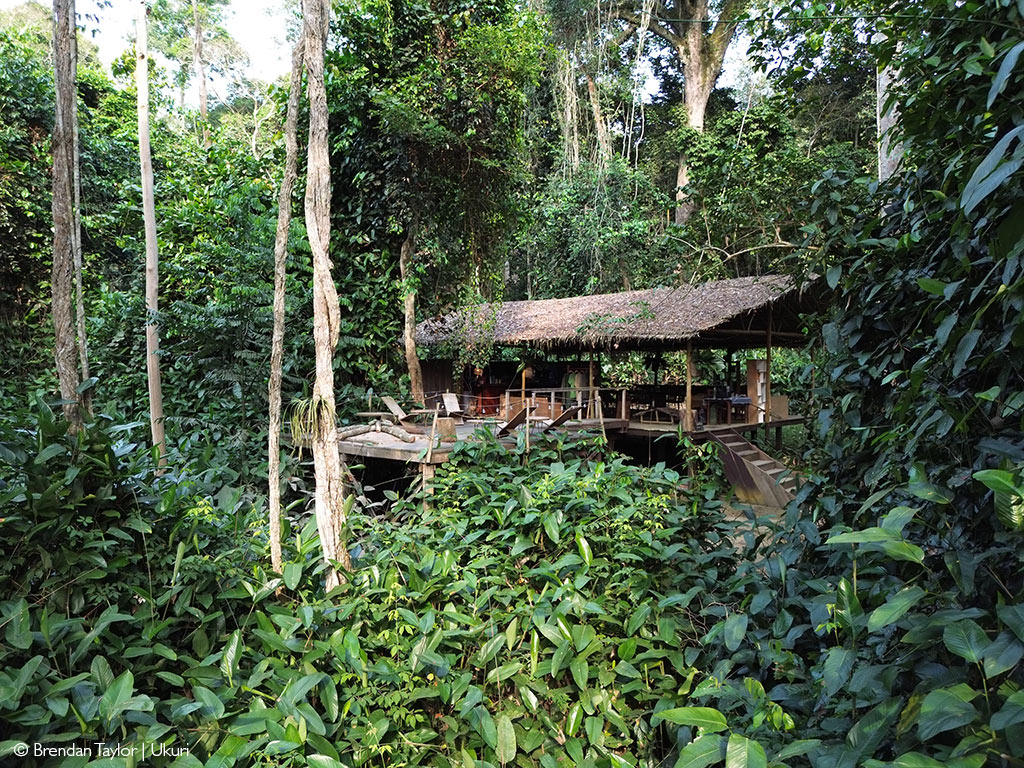
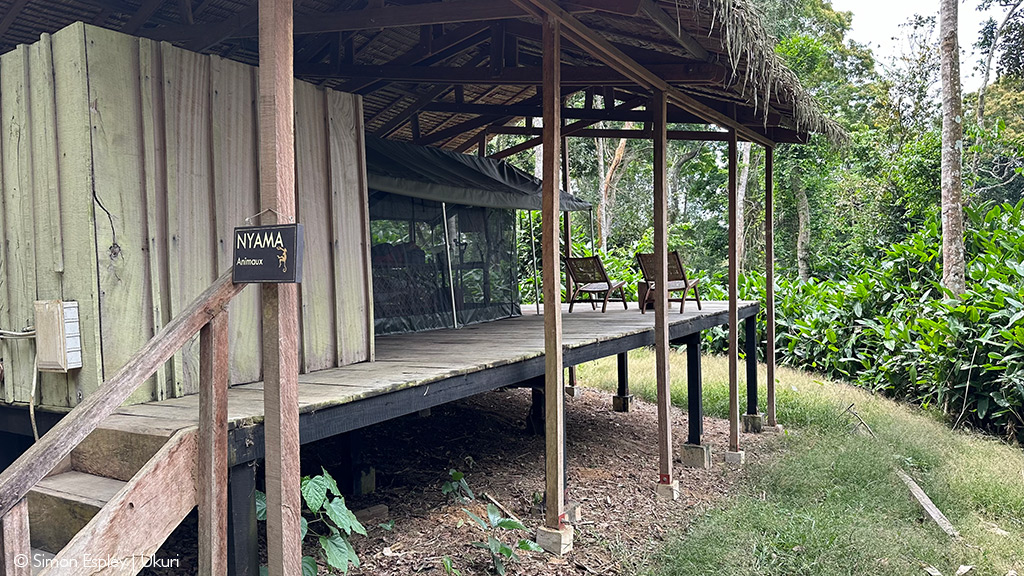
My first night at Camp Imbalanga in Odzala-Kokoua National Park was much like the subsequent nights – hoots, whistles, sighs and screams unfamiliar to my bushveld ears. Our first day in paradise was primarily spent in an elevated hide overlooking Imbalanga baï – an easy 3-minute walk from camp. The most distinctive characteristic of the Congo rainforest is the forest baïs – island clearings in the sea of trees. Here, marshy areas rich in minerals and salts are a magnet for wildlife. During our several visits on that first day, we watched with bated breath as two different silverback western lowland gorillas ventured into the clearing at various times to feed on grasses and herbs.
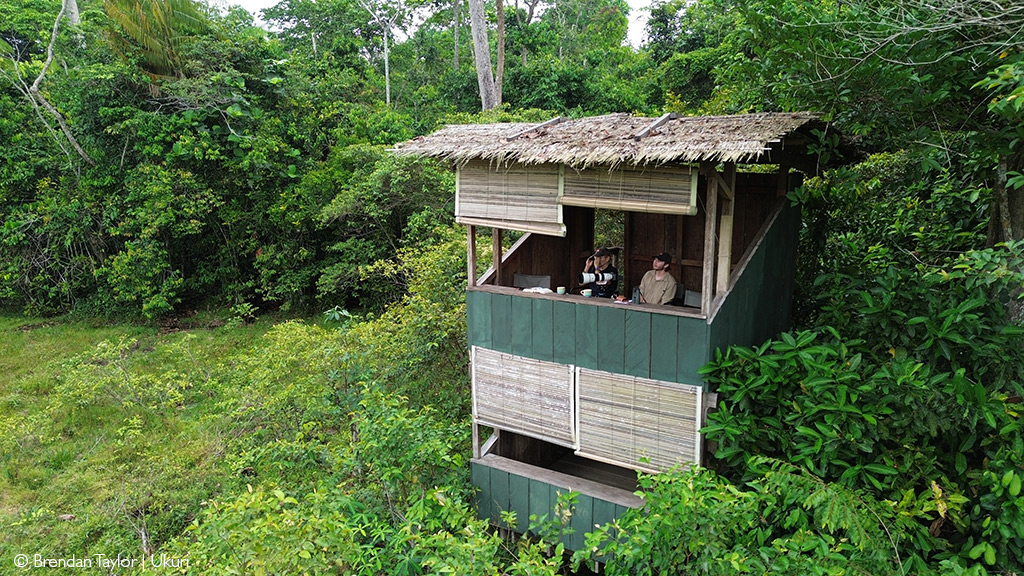
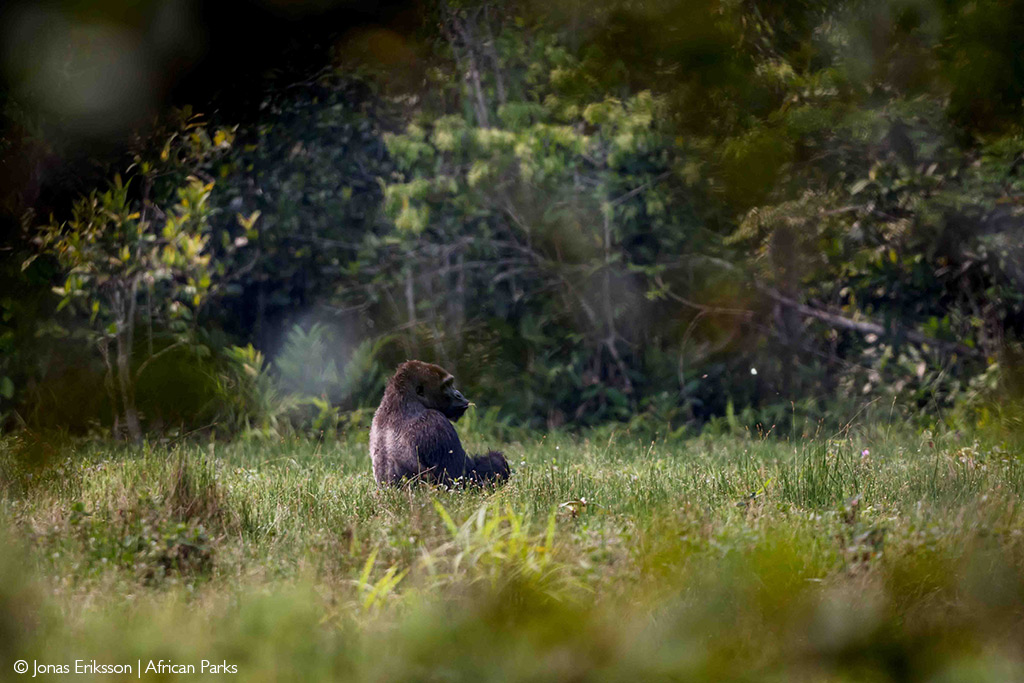
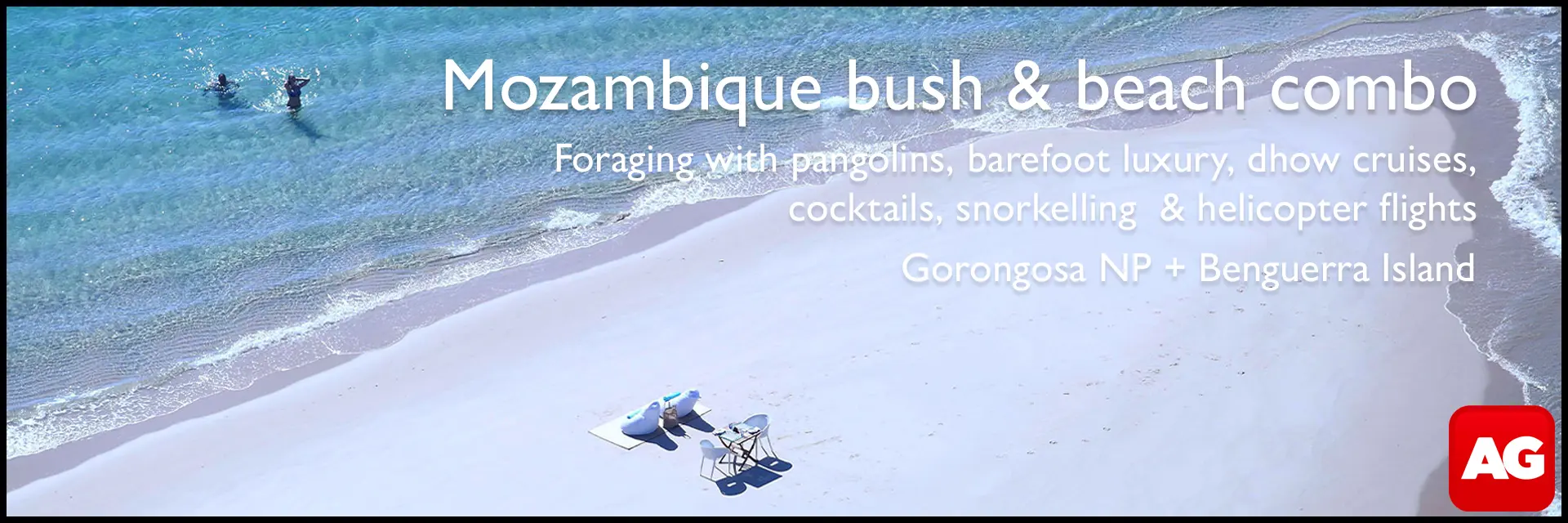
The gorilla experience here differs significantly from the relaxed hangout with habituated mountain gorillas in Uganda and Rwanda. No arduous trek is involved; you wait in an elevated treehouse for the gorillas to appear. These are totally wild, and they will leave if you disturb them, sometimes screaming blue murder as they canter away – a cacophony that assaults the eardrums and echoes in the confines of the baïs. Usually, though, they hang out and do gorilla things while you watch in silent awe. These gorilla encounters last as long as they remain in the clearing, and you can stay in the treehouse all day – sometimes resulting in multiple sightings. A team of researchers is in the lengthy process of habituating a family group here, ensuring a more relaxed encounter at closer quarters. Having enjoyed many habituated mountain gorilla encounters, I found this ‘wilder’ experience refreshing and less intrusive. We saw several gorillas in various baïs in the following few days, including a small family group.
 You, too, can enjoy this epic safari to find lowland gorillas, forest elephants, bongos and much more. Find out more and book your Odzala-Kokoua safari.
You, too, can enjoy this epic safari to find lowland gorillas, forest elephants, bongos and much more. Find out more and book your Odzala-Kokoua safari.
Speaking of culinary delights, I cannot say enough good things about the cuisine at Camp Imbalanga. The theme is best described as Congolese fare with a sophisticated urban twist. Several dishes are prepared the traditional way – wrapped in Marantaceae leaves – and presented on your plate in a quirky way – one serving mimicked the Congo-Brazzavile flag😄. All meals were light yet filling, emphasising vegetarian and fish dishes. The main starch is manioc (cassava), to which is added sweet potato, various vegetables, fish, fruit, freshly baked breads and dips made of ground nuts (peanuts), spinach and smoked barbel (catfish). Barbel wrapped in leaves and roasted over open coals was heavenly, and the delicious aroma as we savoured cold beers after an extraordinary safari day is a fond memory. An indigenous fruit by the name of ‘safou’ from the African pear tree Dacryodes edulis was another highlight and a first for me – an intriguing taste blend reminiscent of avocado and lemon, with an avo texture. The kitchen crew introduced the meals with pride and face-cracking grins.

One day, we ventured to a baï called Moba Pool – a 90-minute drive along a good forest road and a 12-minute walk. On arrival, we were greeted by a herd of forest elephants enjoying a glorious mud bath, often only seeing their bums as they floated in the water, head-down to mine the floor for precious minerals. They would regularly leave the water to spend long moments contemplating, sometimes with trunks raised as they tasted us in the air. After the elephants had ghosted into the dense forest, we enjoyed a one-hour circular walk with our guide, Plaisance Mbounga – a treasure trove of information about the plants and wildlife of the area.

We followed wide elephant walkways through the forest, marvelled at dense flutters of colourful butterflies partying on dung balls and gazed upwards to identify avian candy such as great blue turacos and white-thighed hornbills. We drank bitter but refreshing water from freshly cut lianas (the fast-growing vine is slashed, and the liquid drips out), listened to Guereza colobus croaking in the canopy like giant bullfrogs with microphones and wondered at the sky-scraper African whitewood trees with buttress roots taller than us.
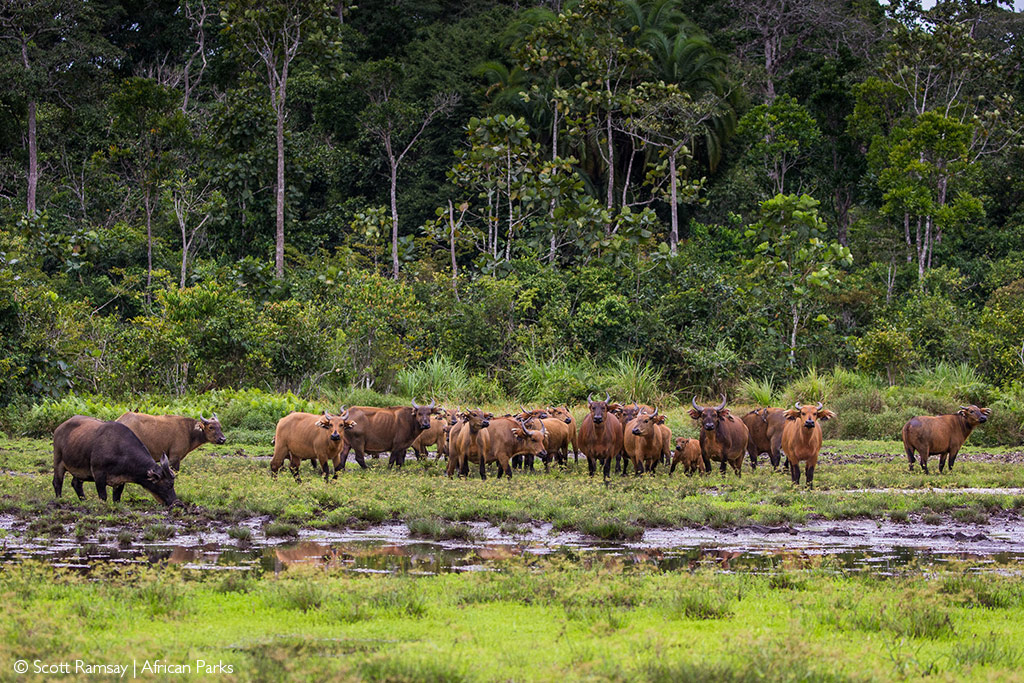
A few days later, we revisited Moba Pool to find a small herd of forest buffalo wallowing in the mud. Compared to the larger, craggy Cape buffalo we have in the bushveld, they are dainty and pretty, with their tufted ears and milk chocolate coats. When not ogling the big stuff, we were kept busy in the lookout tower, racking up birding lifers. My favourite of many sightings was a flock of about 20 black-collared lovebirds that visited the baï on a few occasions.
We also sojourned to the remote Lokoué Baï – an overnight rough-camping adventure. Our journey saw us motor-boat the twisting Mambili and Lokoué rivers (Congo River tributaries), sleepover at a rustic research camp and walk two hours in the dark early hours of the following day. With headlamps shining the way, our guides hacked through the dense Marantaceae understory (which regenerates within weeks) to arrive at the baï seconds before a huge downpour descended on us. Bundling into the watchtower as the heavy drops hammered the tin roof, we were thankful for the fortuitous timing. We cracked open a flask of steaming coffee and tucked into our breakfast of boiled eggs, fried toast and pancakes. The tropical deluge continued for much of the morning. Still, between showers, we saw buffaloes, a flock of 30 grey parrots, a pair of gorillas and a very muscular silverback gorilla with two juveniles. The riverboat cruises were extremely rewarding – we spotted many birds, breaching tiger fish, slender-snouted crocodiles, a sitatunga, buffaloes, water monitors, agile and grey-cheeked mangabeys and De Brazza’s monkeys.
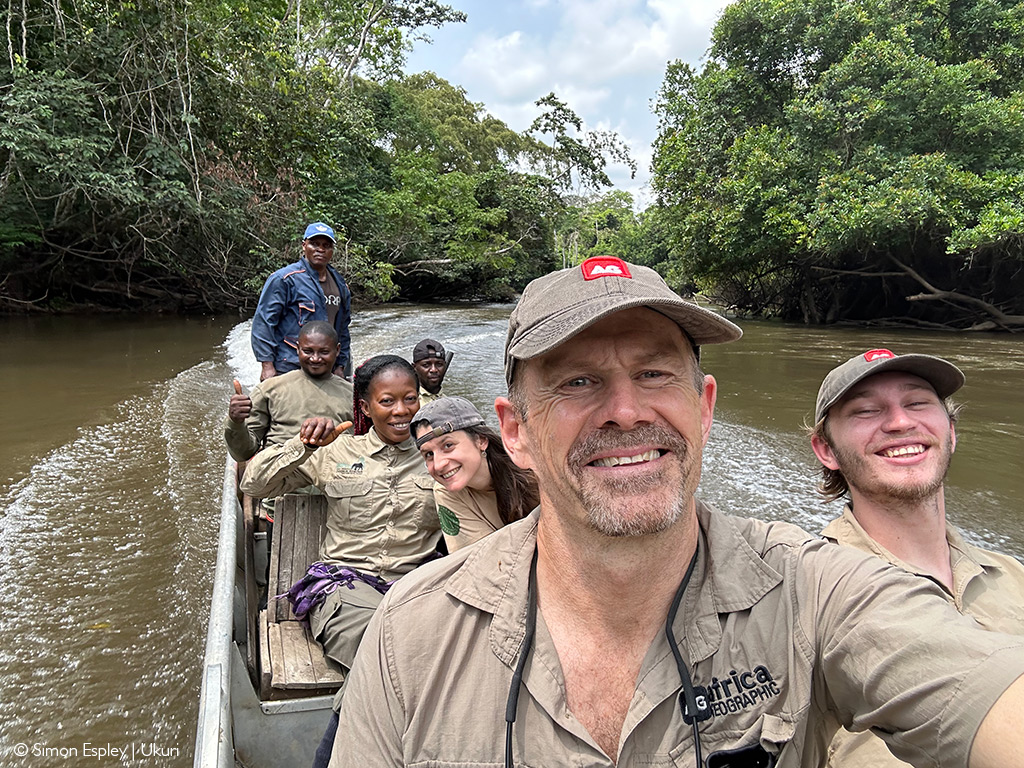
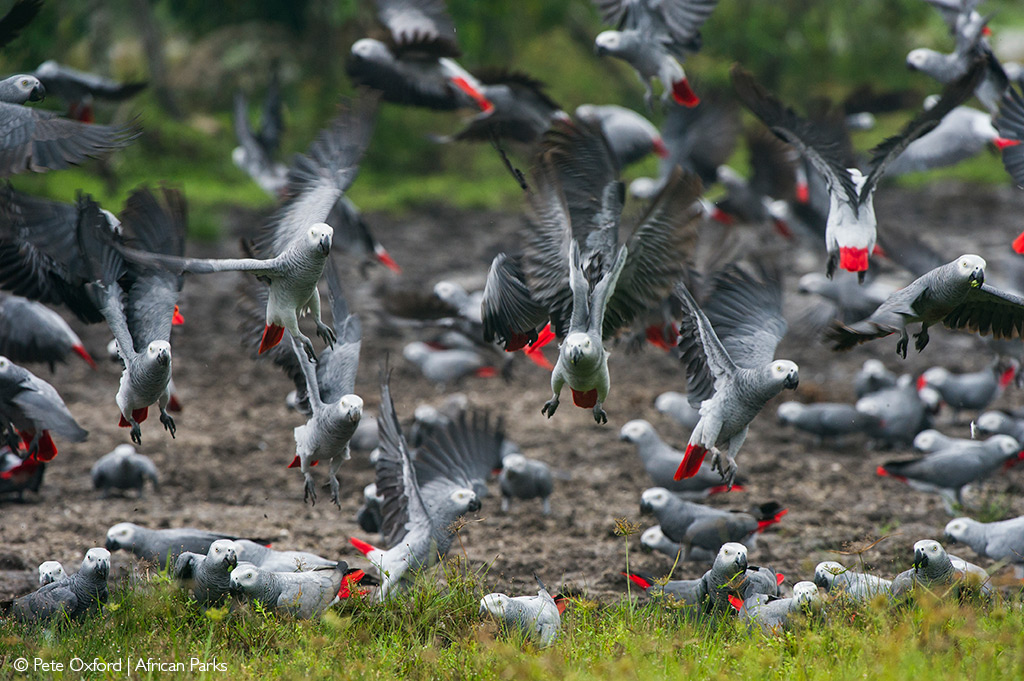


The most memorable encounter for me was a large bull forest elephant that crossed the river in front of us – snorkelling his way to the opposite bank and clambering out – his long white tusks gleaming. When the boat was stationary, the tsetse flies were a nuisance – luckily, we did not encounter them anywhere else. This rough camping adventure is extremely enjoyable for those with a sense of adventure, but note that the night in the research camp is very rustic – with thin mattresses and sleeping bags under a large tin-roofed open-sided shed. We were given a bucket of water and a bar of soap to scrub up before turning in. The food was superb, and the service was excellent. We were offered the possibility of venturing further north to Capitale Baï, where hyenas are known to hunt elephants and large flocks of grey parrots and green pigeons congregate. Sadly, time was not on our side, so we returned to Camp Imbalanga by late afternoon on the second day.
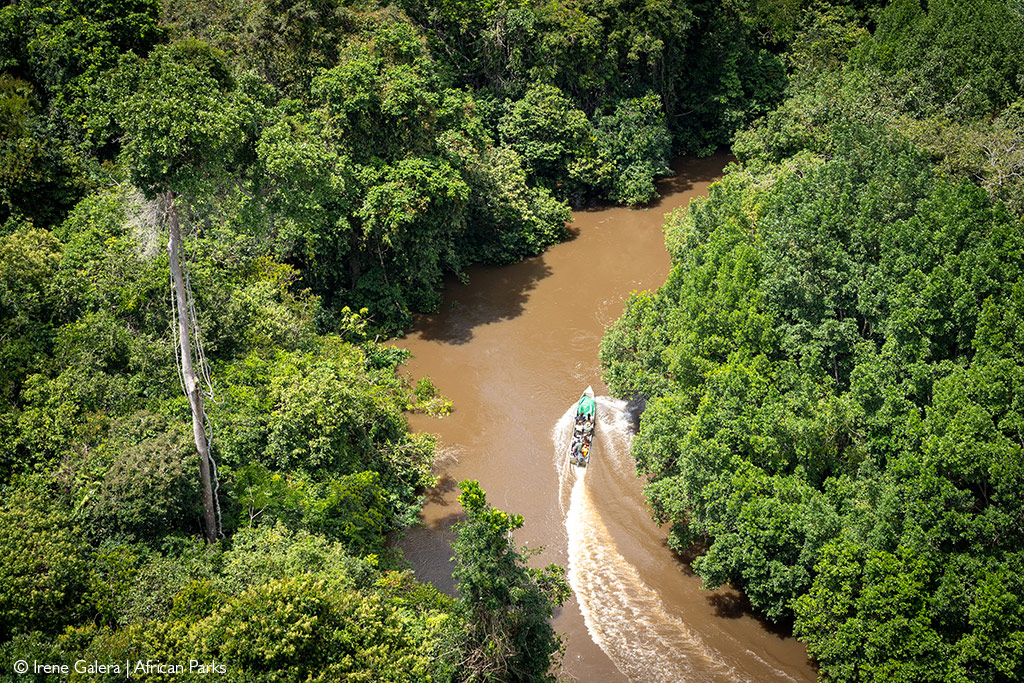
Our mission to Odzala-Kokoua was to document Camp Imbalanga, so we did not have the necessary time to search for jewels such as dwarf crocodile, bongo, golden potto, Demidoff’s dwarf galago, Lord Derby’s flying squirrel or a host of other mysterious creatures. Oh well, I will have to return soon …
THANKS
Our adventure was made all the more enjoyable by Manon Jampy, Odzala-Kokoua National Park head of tourism and commercial development, who played host and interpreter (most staff only speak French). Manon is an inspirational soul whose positive energy affects all lucky enough to spend time with her. Thanks also to legendary park manager Jonas Eriksson, who ensured our pre-trip arrangements went smoothly. Jonas and I enjoyed a stimulating mug of coffee while waiting for gorillas to appear at Imbalanga Baï. I was like a sponge absorbing his wisdom. Most importantly, our adventure was made thoroughly enjoyable by the entire team at Odzala-Kokoua – their endearing smiles, efficiency, and patience with our requests stood out for Brendan and me, and we carry fond memories. This young Congolese team is learning the tourism trade at an impressive pace – they have much to feel proud of.
RESOURCES
More about Odzala-Kokoua National Park:
- Read all there is to know about Odzala-Kokoua here
- You, too, can enjoy this epic safari to find lowland gorillas, forest elephants, bongos and much more. Find out more and book your Odzala-Kokoua safari.
Camp Imbalanga:
Camp Imbalanga is a fully catered tented lodge featuring four ensuite canvas chalets for eight guests.
Nestled under the shady canopy of enormous trees, the ensuite guest chalets – discreetly positioned for privacy – are a short walk along forest paths from the central area. Each is on a raised wooden deck and shelters under a palm frond roof.
The central area, also on a raised wooden deck, features an airy dining room, lounge, kitchen area, small shop and firepit.
The unfenced forest camp is three minutes along a walkway from Imbalanga Baï, one of many baïs in Odzala-Kokoua National Park, where guests can view secretive wildlife species such as western lowland gorillas and forest elephants.
There are no rim-flow pools, air conditioning, or Wi-Fi. Camp Imbalanga is for those seeking a truly immersive experience powered by local people.
WATCH – about Camp Imbalanga:
African Parks:
Odzala-Kokoua National Park is managed by African Parks in collaboration with Congo-Brazzavile’s Ministry of Forest Economy, Sustainable Development and Environment. African Parks is a non-profit conservation organisation that takes on complete responsibility for the rehabilitation and long-term management of national parks in partnership with governments and local communities. They currently manage 22 national parks and protected areas in 12 countries covering over 20 million hectares.
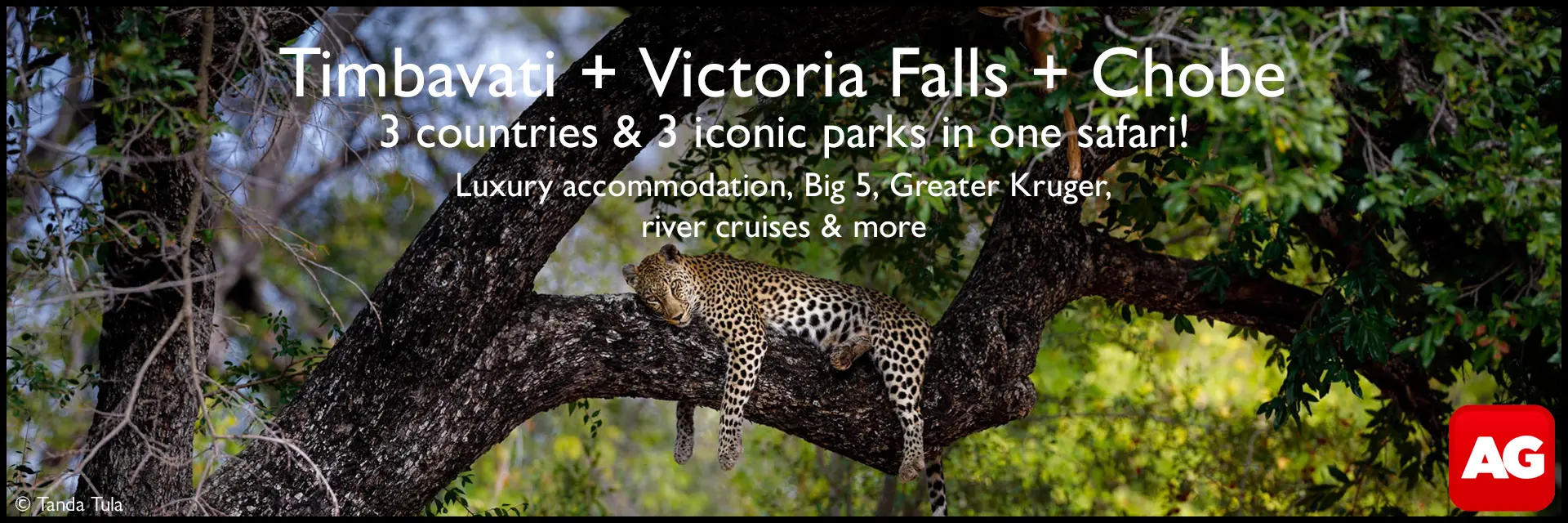
To comment on this story: Login (or sign up) to our app here - it's a troll-free safe place 🙂.![]()




